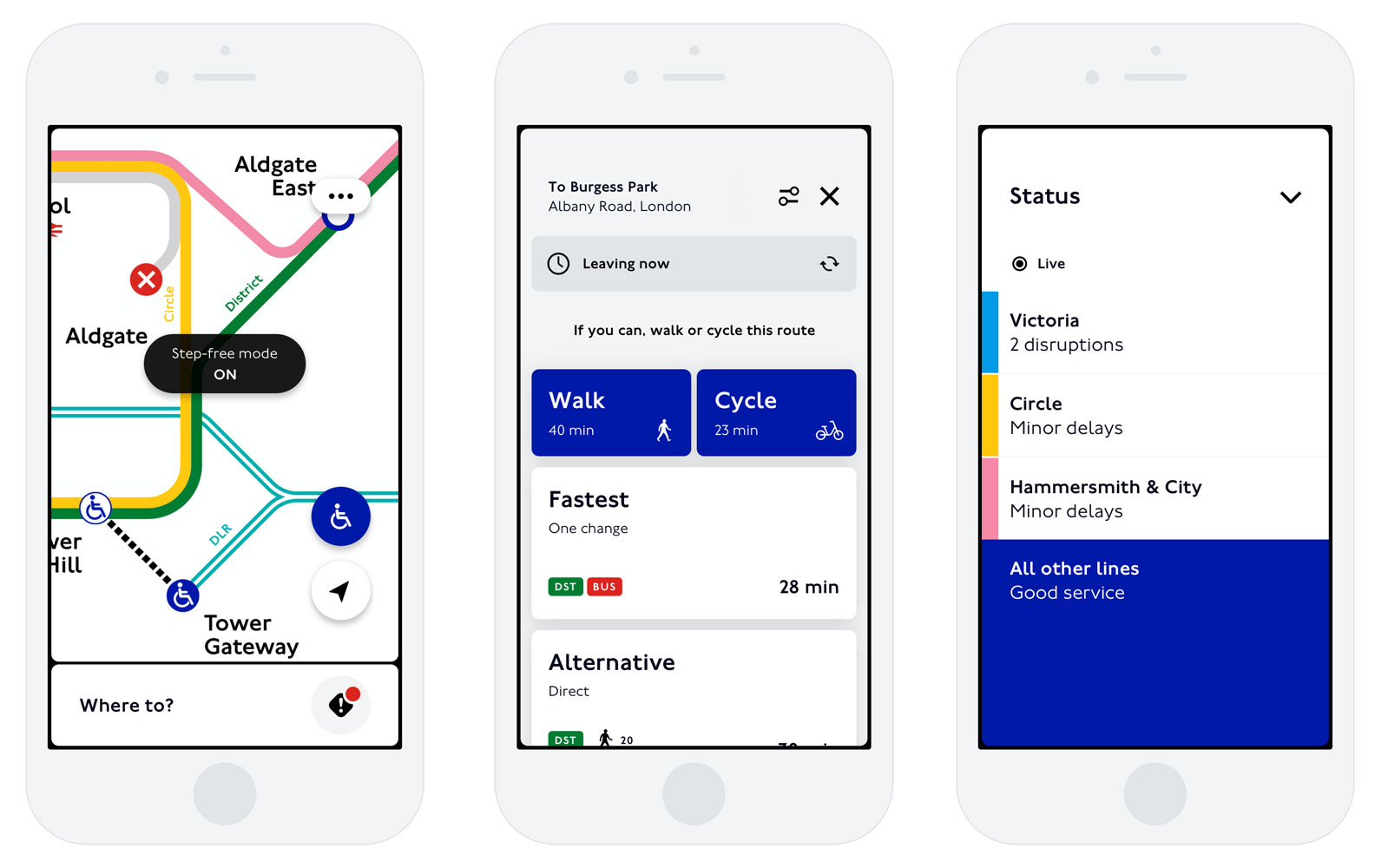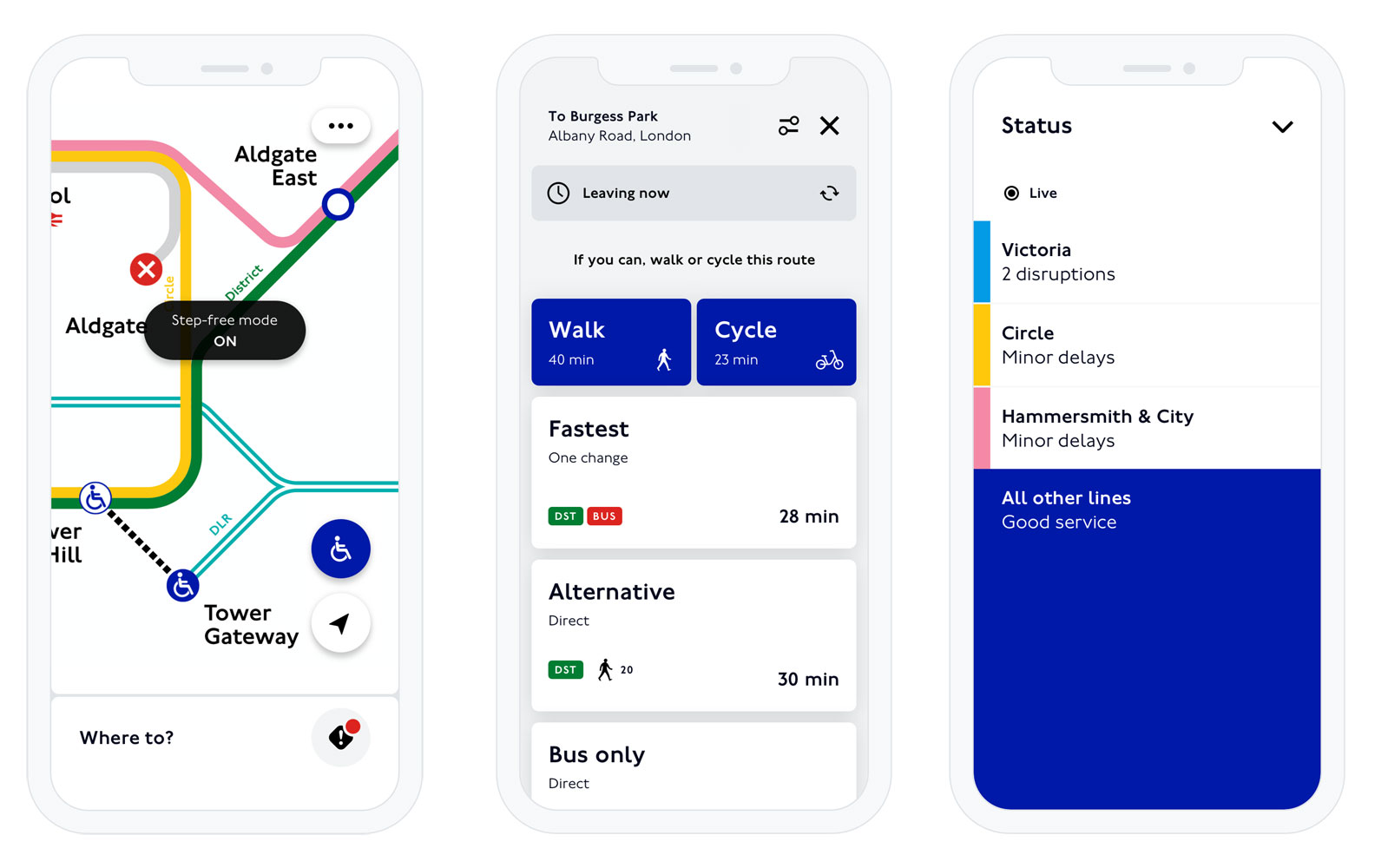A new smartphone app from TfL — for iPhones only at the moment — aims to show the trickle of tube travellers the best time to avoid congestion on the network.
TfL has long tried to persuade people to shift their journey to quieter times to reduce overcrowding, and while most of us can’t do much about the commute, we often have more flexibility about leisure travel.
So TfL has launched a smartphone app, and is making improvements to its open data platforms so that it’s easier to know when public transport is busier, and if walking or cycling alternatives are a viable option. TfL says that these features will develop further based on customer feedback.
Initially for the iPhone, an Android version will be available shortly.
Future upgrades that are being planned include live bus information, lift status and the location of toilets.
The app also includes a ‘step-free’ mode to access views of all stations with street-to-platform accessibility. It shows where step-free access is available in one direction and step-free interchange between lines. It also supports the iOS VoiceOver and Dynamic Type capabilities for people who use those accessibility functions.
TfL developing its own app is unusual. There is an Oyster top-up app, and a Cycling app, but not an official TfL public transport app.
TfL has traditionally opted to provide information to developers and let them build their own smartphone apps on top of it – although this app was designed and built in-house by TfL it still relies on the same open data feeds.
TfL added that its data portal is currently being updated to provide greater resilience and flexibility to developers to access and use the information in their own products and services. Further datasets, such as better accessibility data which was developed for the TfL Go app, will be added later this year.
The TfL Go app can be downloaded from the TfL website here, or from the Apple store here.









Sorry! The tfl.gov.uk/go link doesn’t work…
The Apple Store link also shows the app description and then blanks it out. Perhaps they’re not approved yet by our great digital masters and overlords?
Working now – might have been a glitch.
Yes, the links are working now.
“An Android version of TfL Go will be released in Autumn 2020. And we’ll still be sharing our open data with other transport apps that you might already be using.”
Not sure what point you’re making?
Sorry, when I read that the Government was making an app for the public I just assumed they would start with the most used OS first. My mistake.
Apple users are much more likely to download apps than android users — so while Android users outnumber Apple users, app downloads are the other way around.
Self-perpetuating.
I can’t see anything in those screenshots that has anything to do with social distancing.
Just looks like a rather boring app with less functionality than citymapper.
Maybe the social distancing stuff / busyness stuff is on different screens, but then why release those screenshots?
“Status of tube lines” does not equate to “social distancing functionality”.